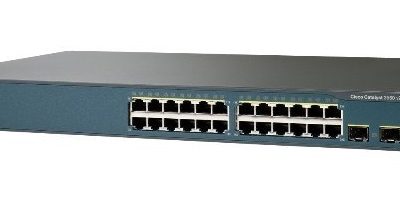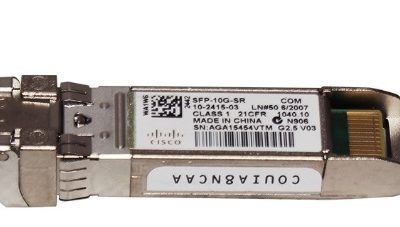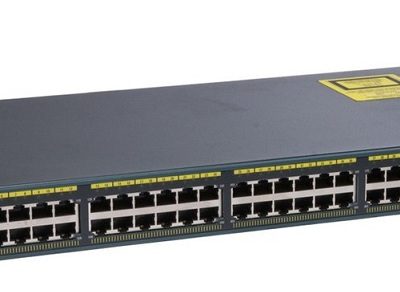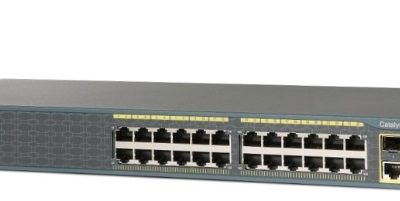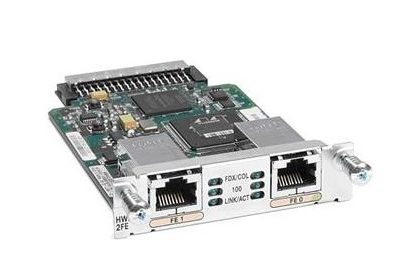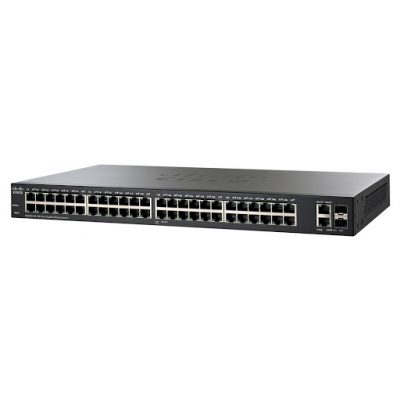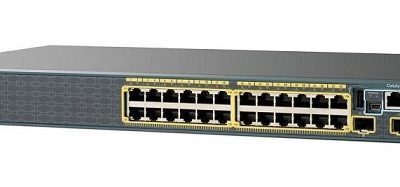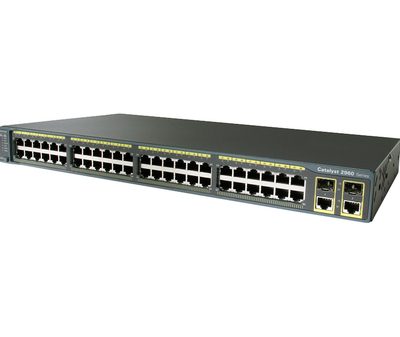Email: quangmaico@quangmai.net - quangmaico@gmail.com
Mô tả
Switch Cisco SF302-08 8-Port 10/100Mbps (SRW208G-K9)
Cisco SF302-08 (SRW208G-K9)
– 8x 10/100Mbps Ports
– 2x Combo mini-GBIC Ports
– QoS Support
– IPv4 / IPv6 Support
– Advanced Security Management
– Auto Voice VLAN Capabilities
– Energy-Efficient
– Mac, Windows, Linux Compatible
| Performance | Capacity in Mpps (64-byte packets): 4.17 |
| Switching Capacity in Gbps: 5.6 | |
| Layer 2 Switching | Spanning Tree Protocol: Standard 802.1d Spanning Tree support |
| Fast convergence using 802.1w (Rapid Spanning Tree), enabled by default | |
| Multiple Spanning Tree instances using 802.1s | |
| Port Grouping: Support for IEEE 802.3ad Link Aggregation Control Protocol | |
| – Up to 8 groups | |
| – Up to 8 ports per group with 16 candidate ports for each (dynamic) 802.3ad link aggregation | |
| VLAN: Support for up to 256 VLANs simultaneously (out of 4096 VLAN IDs) | |
| Port-based and 802.1Q tag-based VLANs | |
| MAC-based VLAN | |
| Management VLAN | |
| Private VLAN Edge, also known as protected ports, with multiple uplinks | |
| Guest VLAN | |
| Unauthenticated VLAN | |
| Voice VLAN: Voice traffic is automatically assigned to a voice-specific VLAN and treated with appropriate levels of QoS | |
| Q-in-Q VLAN: VLANs transparently cross a service provider network while isolating traffic among customers | |
| Generic VLAN Registration Protocol/Generic Attribute Registration Protocol: Protocols for automatically propagating and configuring VLANs in a bridged domain | |
| Dynamic Host Configuration Protocol Relay at Layer 2: Relay of DHCP traffic to DHCP server in different VLAN. Works with DHCP Option 82 | |
| Internet Group Management Protocol Versions 1, 2 and 3 snooping: IGMP limits bandwidth-intensive multicast traffic to only the requesters; supports 256 multicast groups (source-specific multicasting is also supported) | |
| IGMP Querier: IGMP querier is used to support a Layer 2 multicast domain of snooping switches in the absence of a multicast router. | |
| Head-of-Line (HOL) Blocking: HOL blocking prevention | |
| Layer 3 | IPv4 Routing: Wirespeed routing of IPv4 packets |
| Up to 32 static routes and up to 32 IP interfaces | |
| Classless Inter-Domain Routing: Support for CIDR | |
| DHCP Relay at Layer 3: Relay of DHCP traffic across IP domains | |
| User Datagram Protocol Relay: Relay of broadcast information across Layer 3 domains for application discovery or relaying of BootP/DHCP packets | |
| Security | Secure Shell Protocol: SSH secures Telnet traffic to and from the switch; SSH v1 and v2 are supported |
| Secure Sockets Layer: SSL support: Encrypts all HTTPS traffic, allowing highly secure access to the browser-based management GUI in the switch | |
| IEEE 802.1X (Authenticator role): RADIUS authentication and accounting, MD5 hash; guest VLAN; unauthenticated VLAN, single/multiple host mode and single/multiple sessions | |
| Supports time-based 802.1X | |
| Dynamic VLAN assignment | |
| STP Bridge Protocol Data Unit Guard: A security mechanism to protect the network from invalid configurations. | |
| A port enabled for BPDU Guard is shut down if a BPDU message is received on that port | |
| Secure Core Technology: Ensures that the switch will receive and process management and protocol traffic no matter how much traffic is received | |
| Layer 3 Isolation: Allow/disallow routing between IP subnets or directly connected IP networks | |
| Layer 2 Isolation Private VLAN Edge (PVE) with community VLAN: PVE (also known as protected ports) provides Layer 2 isolation between devices in the same VLAN, supports multiple uplinks | |
| Port Security: Locks MAC addresses to ports, and limits the number of learned MAC addresses | |
| RADIUS/TACACS+: Supports RADIUS and TACACS authentication. Switch functions as a client | |
| Storm Control: Broadcast, multicast and unknown unicast | |
| DoS Prevention: DoS attack prevention | |
| Congestion Avoidance: A TCP congestion avoidance algorithm is required to minimize and prevent global TCP loss synchronization. | |
| ACLs: Support for up to 512 rules | |
| Drop or rate limit based on source and destination MAC, VLAN ID or IP address, protocol, port, differentiated services code point/IP precedence, TCP/ UDP source and destination ports, 802.1p priority, Ethernet type, Internet Control Message Protocol packets, IGMP packets, TCP flag | |
| Quality of Service | Priority Levels: 4 hardware queues |
| Scheduling: Strict priority and weighted round-robin | |
| Queue assignment based on DSCP and class of service (802.1p/CoS) | |
| Class of Service: Port based; 802.1p VLAN priority based; IPv4/v6 IP precedence/type of service/DSCP based; Differentiated Services (DiffServ); classification and re-marking ACLs, trusted QoS | |
| Rate Limiting: Ingress policer; egress shaping and rate control; per VLAN, per port and flow based | |
| IPv6 | IPv6: IPv6 host mode |
| IPv6 over Ethernet | |
| Dual IPv6/IPv4 stack | |
| IPv6 neighbor and router discovery | |
| IPv6 stateless address auto-configuration | |
| Path maximum transmission unit discovery | |
| Duplicate address detection | |
| ICMP version 6 | |
| IPv6 over IPv4 network with Intra-Site Automatic Tunnel Addressing Protocol support | |
| IPv6 QoS: Prioritize IPv6 packets in hardware | |
| IPv6 ACL: Drop or rate limit IPv6 packets in hardware | |
| Multicast Listener Discovery Snooping: Deliver IPv6 multicast packets only to the required receivers | |
| IPv6 Applications: Web/SSL, Telnet server/SSH, ping, traceroute, Simple Network Time Protocol, Trivial File Transfer Protocol, SNMP, RADIUS, syslog, DNS client, protocol-based VLANs | |
| IPv6 RFCs Supported: RFC 2463 – ICMP version 6 | |
| RFC 3513 – IPv6 address architecture | |
| RFC 4291 – IPv6 addressing architecture | |
| RFC 2460 – IPv6 specification | |
| RFC 2461 – Neighbor discovery for IPv6 | |
| RFC 2462 – IPv6 stateless address auto-configuration | |
| RFC 1981 – Path MTU discovery | |
| RFC 4007 – IPv6 scoped address architecture | |
| RFC 3484 – Default address selection mechanism | |
| RFC 4214 – ISATAP tunneling | |
| RFC 4293 – MIB IPv6: Textual conventions and general group | |
| RFC 3595 – Textual conventions for IPv6 flow label | |
| Management | Web User Interface: Built-in switch configuration utility for easy browser-based device configuration (HTTP/HTTPS). Supports configuration, system dashboard, system maintenance and monitoring |
| SNMP: SNMP versions 1, 2c, and 3 with support for traps, and SNMP version 3 user-based security model | |
| Remote Monitoring: Embedded RMON software agent supports 4 RMON groups (history, statistics, alarms and events) for enhanced traffic management, monitoring and analysis | |
| IPv4 and IPv6 Dual Stack: Coexistence of both protocol stacks to ease migration | |
| Firmware Upgrade: Web browser upgrade (HTTP/HTTPS) and TFTP | |
| Upgrade can be initiated through console port as well | |
| Dual images for resilient firmware upgrades | |
| Port Mirroring: Traffic on a port can be mirrored to another port for analysis with a network analyzer or RMON probe. Up to 8 source ports can be mirrored to one destination port. A single session is supported | |
| VLAN Mirroring: Traffic from a VLAN can be mirrored to a port for analysis with a network analyzer or RMON probe. Up to 8 source VLANs can be mirrored to one destination port. A single session is supported | |
| Dynamic Host Configuration Protocol (Options 66, 67, 82, 129 and 150): DHCP Options facilitate tighter control from a central point (DHCP server) to obtain IP address, auto-configuration (with configuration file download) and DHCP relay | |
| Text-Editable Config Files: Config files can be edited with a text editor and downloaded to another switch, facilitating easier mass deployment | |
| Smartports: Simplified configuration of QoS and security capabilities | |
| Auto Smartports: Applies the intelligence delivered through the Smartport roles and applies it automatically to the port based on the devices discovered over CDP or LLDP-MED. This facilitates zero touch deployments | |
| Textview CLI: Scriptable command-line interface. A full CLI as well as a menu-based CLI is supported | |
| Cloud Services: Support for Cisco Small Business FindIT Network Discovery Utility | |
| Localization: Localization of GUI and documentation into multiple languages | |
| Other Management: Traceroute; single IP management; HTTP/HTTPS; SSH; RADIUS; port mirroring; TFTP upgrade; DHCP client; BOOTP; SNTP; Xmodem upgrade; cable diagnostics; ping; syslog; Telnet client (SSH secure support) | |
| Power Efficiency | Energy Detect: Automatically turns off power off on Gigabit Ethernet RJ-45 port when detecting link down |
| Active mode is resumed without loss of any packets when the switch detects the link up | |
| Cable Length Detection: Adjusts the signal strength based on the cable length. Reduces the power consumption for cables shorter than 10 m | |
| General Features | Jumbo Frames: Frame sizes up to 10 KB supported on 10/100 and Gigabit interfaces |
| MAC Table: Up to 8000 MAC addresses | |
| Discovery | Bonjour: The switch advertises itself using the Bonjour protocol |
| Link Layer Discovery Protocol (802.1ab) with LLDP-MED extensions: LLDP allows the switch to advertise its identification, configuration and capabilities to neighboring devices that store the data in a MIB. LLDP-MED is an enhancement to LLDP that adds the extensions needed for IP phones | |
| Cisco Discovery Protocol: The switch advertises itself using the Cisco Discovery Protocol | |
| Power Consumption | Power Savings Mode: Energy Detect |
| Power Consumption Worst Case: 110V=8.8W | |
| 220V=9.2W | |
| Heat Dissipation (BTU/hr): 31.4 | |
| Ports | Total System Ports: 8 Fast Ethernet + 2 Gigabit Ethernet |
| RJ-45 Ports: 8 Fast Ethernet | |
| Combo Ports (RJ-45 + SFP): 2 Gigabit Ethernet Combo 1 | |
| Buttons | Reset button |
| Cabling Type | Unshielded twisted pair Category 5 or better for 10BASE-T/100BASE-TX; UTP Category 5 Ethernet or better for 1000BASE-T |
| LEDs | System, Link/Act, Speed |
| Flash | 16 MB |
| CPU | 128 MB memory |
| Packet Buffer Memory | 4 MB |
| Power Supply | 100-240V 47-63 Hz, internal, universal |
| MTBF | @ 40°C (hours): 69,825 |
| Certifications | UL (UL 60950), CSA (CSA 22.2), CE mark, FCC Part 15 (CFR 47) Class A |
| MINIMUM REQUIREMENTS | Web Browser: Mozilla Firefox version 2.5 or later; Microsoft Internet Explorer version 6 or later |
| Category 5 Ethernet network cable | |
| TCP/IP, network adapter and network operating system (such as Microsoft Windows, Linux or Mac OS X) installed on each computer in the network | |
| Dimensions (DxWxH) | 6.7 x 11 x 1.45′ (170 x 279.4 x 36.83 mm) |
| Weight | 2.6 lb (1.18 kg) |


